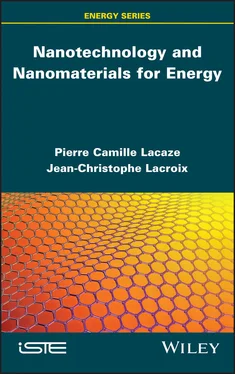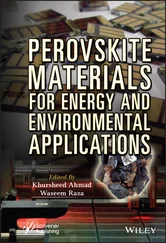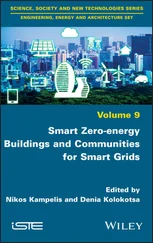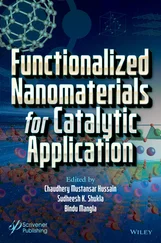1 Cover
2 Title Page Series EditorPierre-Noël Favennec
3 Copyright First published 2021 in Great Britain and the United States by ISTE Ltd and John Wiley & Sons, Inc. Apart from any fair dealing for the purposes of research or private study, or criticism or review, as permitted under the Copyright, Designs and Patents Act 1988, this publication may only be reproduced, stored or transmitted, in any form or by any means, with the prior permission in writing of the publishers, or in the case of reprographic reproduction in accordance with the terms and licenses issued by the CLA. Enquiries concerning reproduction outside these terms should be sent to the publishers at the undermentioned address: ISTE Ltd 27-37 St George’s Road London SW19 4EU UK www.iste.co.uk John Wiley & Sons, Inc. 111 River Street Hoboken, NJ 07030 USA www.wiley.com © ISTE Ltd 2021 The rights of Pierre Camille Lacaze and Jean-Christophe Lacroix to be identified as the authors of this work have been asserted by them in accordance with the Copyright, Designs and Patents Act 1988. Library of Congress Control Number: 2021941647 British Library Cataloguing-in-Publication Data A CIP record for this book is available from the British Library ISBN 978-1-78630-497-1
4 Introduction
I.1. History of nanotechnology I.2. Outline of this book I.3. Dedication
5 PART 1 Nanomaterials and Nanotechnologies 1 Carbon-based Nanomaterials 1.1. Fullerenes 1.2. Carbon nanodiamonds 1.3. Carbon dots or carbon quantum dots 1.4. Carbon nanotubes 1.5. Graphene 1.6. Graphene quantum dots 1.7. Conclusions and perspectives of carbon-based nanomaterials 2 Inorganic Nanomaterials 2.1. Metallic nanoparticles 2.2. Metal nanoclusters 2.3. Semiconductor quantum dots 2.4. Two-dimensional inorganic lamellar nanosheets 2.5. Hybrid metal-organic frameworks 2.6. Conclusions on inorganic nanomaterials
6 PART 2 Nanotechnology and Nanomaterials for Energy 3 Energy Storage 3.1. Worldwide energy use 3.2. Energy storage systems 3.3. Conclusions on energy storage 4 Energy Conversion 4.1. Photovoltaics 4.2. Electroluminescence, lighting and display 4.3. Conclusions on energy conversion 5 Electro- and Photocatalysis 5.1. Water splitting 5.2. Electrolysis techniques 5.3. HER and OER processes in water splitting 5.4. Photoelectrochemical water splitting 5.5. Fuel cells
7 Conclusion
8 References
9 Index
10 End User License Agreement
1 Cover
2 Table of Contents
3 Title Page Series EditorPierre-Noël Favennec
4 Copyright First published 2021 in Great Britain and the United States by ISTE Ltd and John Wiley & Sons, Inc. Apart from any fair dealing for the purposes of research or private study, or criticism or review, as permitted under the Copyright, Designs and Patents Act 1988, this publication may only be reproduced, stored or transmitted, in any form or by any means, with the prior permission in writing of the publishers, or in the case of reprographic reproduction in accordance with the terms and licenses issued by the CLA. Enquiries concerning reproduction outside these terms should be sent to the publishers at the undermentioned address: ISTE Ltd 27-37 St George’s Road London SW19 4EU UK www.iste.co.uk John Wiley & Sons, Inc. 111 River Street Hoboken, NJ 07030 USA www.wiley.com © ISTE Ltd 2021 The rights of Pierre Camille Lacaze and Jean-Christophe Lacroix to be identified as the authors of this work have been asserted by them in accordance with the Copyright, Designs and Patents Act 1988. Library of Congress Control Number: 2021941647 British Library Cataloguing-in-Publication Data A CIP record for this book is available from the British Library ISBN 978-1-78630-497-1
5 Introduction
6 Begin Reading
7 Conclusion
8 References
9 Index
10 End User License Agreement
1 Chapter 1Figure 1.1. Number of publications on the subject of fullerenes, CNTs and graphe...Figure 1.2. Fullerenes: C60 (a) and C70 (b) Figure 1.3. Voltametric curves showing redox of C60 in a low temperature acetoni...Figure 1.4. Structure of two carboxyfullerene stereoisomers, C3-C60 and D3-C60. ...Figure 1.5. Structure of the C80 fullerene and of the ECF Sc3N@C80. a) C80 fulle...Figure 1.6. Progressive transformation of nanodiamonds (ND) into OLF. a) Beginni...Figure 1.7. Simplified diagram showing the detonation technique for nanodiamond ...Figure 1.8. Fluorescence of ND nanocrystallites containing NV defects Figure 1.9. Structure of carbon quantum dots (CQD) showing the association of gr...Figure 1.10. Luminescence of an aqueous solution of CQDs produced by laser ablat...Figure 1.11. Luminescence of CQDs deposited on a glass substrate Figure 1.12. Simplified diagram of the CVD apparatus used to produce CNTs. Adapt...Figure 1.13. Schematic illustration of the electrolysis setup for CNT production Figure 1.14. Diagram showing the formation of an SWCNT defined by rolling up a g...Figure 1.15. Examples of different CNT configurations. a) Examples of two SWCNTs...Figure 1.16. Different steps in CNT growth using the VSS mechanism Figure 1.17. Characterization of SWCNTs synthesized using different catalysts (m...Figure 1.18. Illustration of CNT growth from cycloparaphenylene (CPP). a) Armcha...Figure 1.19. Separation of SWCNTs of structure (n,m) using ultracentrifugation, ...Figure 1.20. Diagram of a “composite” electrode, made up of a “forest” of SWCNTs...Figure 1.21. Horizontally aligned SWCNT array on silicon substrate Figure 1.22. SWCNT “forest” deposited vertically on a silicon substrate Figure 1.23. Graphene films deposited on a Si substrate covered with a thin laye...Figure 1.24. Resistivity variations of graphene and two 2D materials as a functi...Figure 1.25. Resistivity of graphene and mobility of charge carriers Figure 1.26. Graphene deposits obtained on Ni and Cu substrates, transferred to ...Figure 1.27. Different steps in the catalytic process leading to a graphene mono...Figure 1.28. Formation of a single layer of graphene by “joining” two graphene g...Figure 1.29. Steps in continuous tape formation [PET/epoxy/G/Cu] Figure 1.30. Statistical evaluation of the quality of graphene obtained by GO re...Figure 1.31. Transformation of GO bulk aerogel into graphene by point laser irra...Figure 1.32. Different stages in the production of solidified graphene foam, SGF Figure 1.33. Mechanical characteristics of a film of graphene oxide (GO) Figure 1.34. Graphene oxide (GO) sheets Figure 1.35. Graphene paper (r-GO) obtained after reduction of graphene oxide (G...Figure 1.36. Reprocessed h-graphene Figure 1.37. SEM images of graphene fibers. a) Knotted fiber. b) Twisted two-str...Figure 1.38. Diagram of the apparatus used in large-scale graphene wire producti...Figure 1.39. Successive steps in the formation of G/PS composite Figure 1.40. Uses of graphene derivatives in different fields Figure 1.41. Two-step transformation of graphite into GQDs then into WGQD white ...Figure 1.42. N-GQD production by TATB pyrolysis Figure 1.43. Photoluminescence of GQDs, interpreted as a function of size and li...Figure 1.44. Perrin-Jablonski diagrams of nitrogen and oxygen doped GQDs charact...Figure 1.45. VOC detection device, using variations in the resistance of a N-GQD...Figure 1.46. UV detection device. a) Photograph of the Au/GQD/Ag junction. b) SE...Figure 1.47. Diagrammatic representation of graphynes. a) Simple graphyne (n = 1...Figure 1.48. Electrochemical reduction of O2 on GDY electrodes doped with differ...Figure 1.49. Production of Cl-GDY and lithium-ion storage capacities
Читать дальше












